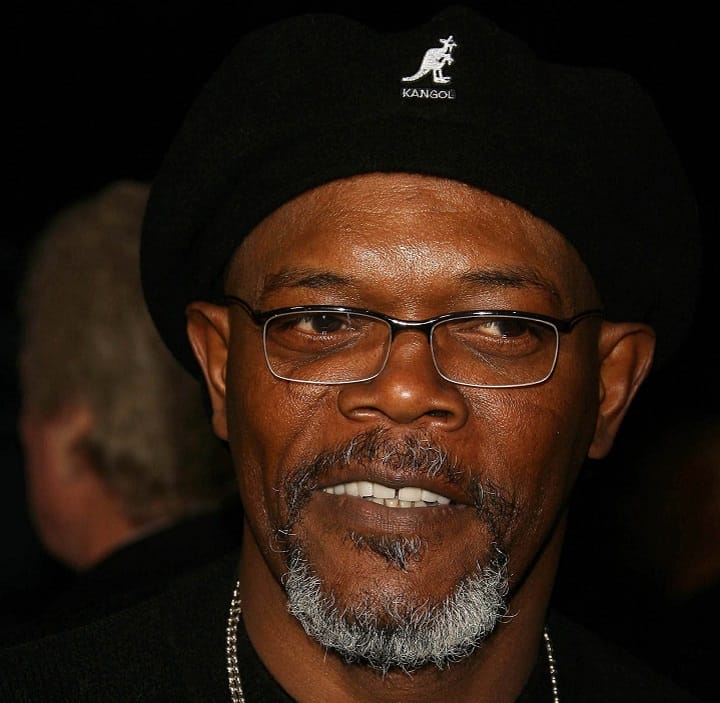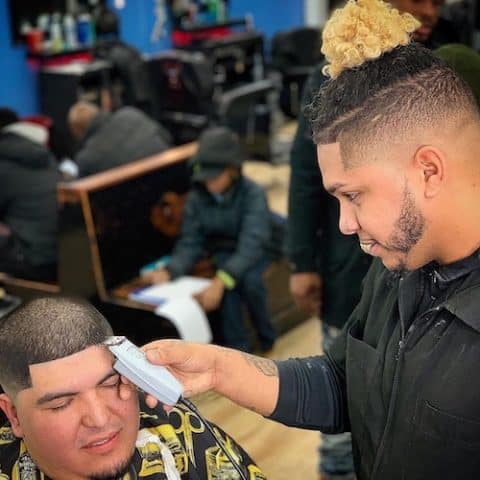Facial hair can be sculpted in numerous ways, and settling for a style that suits you can be challenging. The manly look comes with keeping a beard and the sleek appeal of a goatee.
While a goatee incorporates hair on the mustache and chin, a beard features hair on the lower cheeks and chin. Before settling for a goatee or a beard, it’s essential to understand their differences. This article is a guide to styling goatees and beards.
It covers everything you need to know about goatees and beards, including their pros, cons, and popular styles.
Table Of Contents
Short History of Goatees
Goatees first originated from Pan, the god of flocks and the wild in Ancient Rome and Greece, who had goat-like features. When Christianity came, copying ancient images became a norm. And Satan took the image of Pan.
In 1940, goatees re-emerged as a popular trend among the beatniks in the US after the second world war. During this period, artists, especially jazz musicians, adopted this style. It remained popular but fell out of fashion in the 1960s.
The style resurfaced in the 1990s and has become widespread until today among men of all professions and socio-economic classes.
5 Most Popular Styles
Full
Photo: s_bukley/depositphotos.com
Also known as the classic goatee, the full goatee is a popular option and the first choice for most people when choosing a goatee style. It is circular and is characterized by straight lines with the mustache connected to the soul patch and the beard.
It surrounds the mouth while covering the chin to make the soul patch, mustache, and goatee one. The chin hair extends up to the edges of the mouth.
Pencil
Photo @barbershopindonesia.id
This style comprises a thinly shaped mustache connected to the chin beard and a small soul patch. The hair on the chin can be long, short, or thinly shaped, according to one’s preferences.
Van Dyke
Photo @vadim_shifrin_barber
This is a T-shaped goatee style featuring clean-shaven cheeks, a soul patch, and a small goatee. It consists of a goatee and a mustache that is not connected due to a clean line trimmed between them.
Anchor
Photo @barbersukraine
The anchor is a hair strip stretching below the lower lip towards the chin and then along the jawline. It has no cheek hair or sideburns.
Landing Strip
Photo @barbersukraine
This style comprises a liner of hair extending from the lip to the chin. It is an easy-to-grow and maintains a goatee style. Unlike the other types, you don’t need to grow a mustache with the landing strip.
For this style, you trim the hair below the mouth in a straight line. This hair can go below the chin to your desired length.
Pros and Cons
Pros
- They are cleaner.
- Goatees eliminate itching, irritation, and discomfort around the cheeks because they take a small area of your face.
- Short and average-length-sized goatees don’t require styling products.
- They don’t require several styling tools; you only need a trimmer.
- It takes less time to style.
- It takes less than a minute to trim.
Cons
- Long goatees require a styling agent.
- Goatees require regular shaving.
- Unsuitable for chins that come in patchy.
How to Maintain
Step 1 – Allow the foundation to grow
Avoid shaving your goatee for about a week to allow the hair to grow thicker and fuller. Let it grow around the mouth and below it. This makes the process of shaping your goatee easier.
Step 2 – Shape
When the foundation grows, it’s time to shape your goatee. Use a single blade or a trimmer to give your goatee the desired shape. Shaping is easy if your goatee is longer because you can see the outline.
When shaping, note that symmetry is critical. Ensure that both the width and length of your goatee are well balanced.
Step 3 – Trim regularly
Trim your goatee regularly, even if you want it to grow long. Trimming the edges keeps the goatee clean even as it grows longer. For effective results, use a nose hair trimmer or an electric trimmer.
Step 4 – Clean-shave
Clean the areas around your face that surround the goatee. A goatee looks best when its surrounding areas are clean. Use clear shaving cream since it makes shaving easier and increases the visibility of the edges.
When shaving, avoid moving the razor towards your goatee. This way, you avoid accidentally shaving your goatee.
Step 5 – Wash
Regularly washing your goatee is a must-do in its maintenance routine. Shampooing and conditioning your goatee once or twice a week prevents it from turning oily, capturing debris, and causing acne.
Short History of Beards
The popularity of beards dates back to Ancient Greece, Rome, and Egypt. In Ancient Rome, trimmed and styled beards were popular, and philosophers kept theirs long to symbolize deep thoughtfulness.
In Ancient Greece, beards symbolized honor, and cutting one’s beard was used as punishment. In Ancient Egypt, kings dyed their beards or tied them using metal to impress their followers. Between the 14th and 17th centuries, beards signified a rite of passage.
Around the 18th century, they became less popular as men opted to shave as a symbol of open-mindedness. Cast steel’s invention led to blades, which enabled people to shave often. Around the 19th century, beards re-emerged as a popular trend.
From the 1900s, people adopted different beard fashions. The rise of the hippie culture in the 1960s came with bushy beards, among many other shaving styles. Currently, people have embraced beards in varying styles and settings.
Pros and Cons
Pros
- They offer skin protection from UV rays.
- They shield from cold temperatures.
- They prevent bacteria and harmful microorganisms from getting inside the mouth.
- They reduce acne.
- They’re versatile; you can shape your beard to suit your preference. Circle beards are attractive; short ones give you a professional look, while a beardstache is a good look regardless of the setting.
- They boost self-confidence.
Cons
- They can cause skin problems because cleaning all the grime and dead skin that leads to acne can be challenging.
- They require regular maintenance.
- It takes time to style and maintain.
4 Most Popular Styles
Full
Photo @kasthebarber
This is a traditional way of growing a beard. It’s challenging to achieve this style since genetics determine if one can grow full facial hair. It has a distinct shape that begins from the cheek line. It can be hard to define the cheek line if you have high cheekbones.
To achieve the look, draw an imaginary line to define your cheek line from the front part of the ear to the edges of the mustache.
Short Boxed
Photo @shrunknheads
This style covers half the face. It is a full beard style suitable for those who don’t want the stress of growing a full beard. It consists of contours and sharp lines groomed around the jawline to look like a box. It’s trimmed to about 0.5 inches long to give it a formal look.
You’ll need to grow your beard for about a week to achieve a short boxed beard. This is because the style connects the mustache and soul patch to the chinstrap.
Scruffy
Photo @alan_beak
The scruffy beard is about 2 to 5mm long and gives you a rugged, natural appearance. It doesn’t have a standard shape, which allows you to be creative. It’s suitable for men who can’t grow full facial hair or whose beards grow in patches.
Stubble
Photo @barbersukraine
Also called the 3-day beard, the stubble beard has a 3mm to 5mm length. It gives you a rugged, rogue look that’s also very masculine and attractive.
How to Maintain
Step 1 – Wash weekly
Washing your beard keeps its appearance healthy. It eliminates dead skin, dust particles, and debris. Wash once or twice weekly using a beard shampoo. Washing your beard more frequently dries it, leading to itchiness, curls, and split ends.
To wash correctly, follow these steps below:
- Wet your beard using warm water.
- Massage using beard shampoo.
- Once lather forms, rinse off using warm water.
- Pat dry with a towel but gently to prevent damaging the hair.
Step 2 – Soften
A soft beard is healthy and hydrated. The following are tips on softening a beard that you can adopt. One, apply beard oil. This product helps supplement the natural oils in the skin and moisturize the skin underneath the beard.
Apply beard oil after a shower to allow your beard to retain moisture. Pour a few drops into your hands, spread, and apply to your beard.
The amount of beard oil you should apply depends on the amount and type of hair you have. Apply more beard oil if you have a full, long, and thick beard. Apply daily and more frequently if you live in dry climatic areas.
You can substitute beard oil with beard balm or alternate using them. A beard balm gives the best results when conditioning and styling.
These products help to keep your beard moisturized. They are crucial to preventing a beard burn.
Step 3 – Brush
Brush your beard daily to help distribute the skin’s natural oils and grooming products like beard balm or oil. Ensure that you use the world’s best beard brushes, as their bristles can remove dirt and train the hair to grow in a specific direction.
Using an inappropriate brush or excessive brushing causes split ends and skin irritation. To brush your beard, use a lifting motion starting from the hair underneath. Finish using downward movements on the surface to help bring the hair in one direction.
Step 4 – Trim
Trimming your beard helps keep it in shape and eliminates frequent visits to the barber. It should be part of your weekly beard maintenance routine. To do this, use a brush, an electrical trimmer, a scissor, and a comb.
Below are things to keep in mind while trimming your beard:
- Trim the neckline to give your beard a professional or polished appearance.
- Trim the cheek line up to the sideburns.
- Use appropriate tools, including beard shapers.
- Take your time, especially if you’re a beginner.
Comparison
Most people find it challenging to differentiate between a goatee and a beard. Below are some facts that distinguish them.
- A beard comprises hair on the chin and cheeks. A goatee is made of hair on the chin, not the cheeks.
- A beard has a fuller appearance than a goatee. While a beard covers the cheeks, chin, and the front part of the ears, a goatee only covers the chin and upper lip.
Things to Consider
Face Shape
Before choosing either a goatee or a beard, consider your face shape. A goatee increases the length of your chin, thus altering the shape of your face. A goatee is best suited for round, oval and square face shapes.
A beard is best suited for men with diamond and triangular-shaped face shapes because the style draws attention from the chin. If you have a rectangular face shape, your face appears longer. Settling for a full beard will make your jaw appear broader to give your face a balanced appearance.
Facial Hair Thickness
The thickness of your facial hair determines whether you should choose a goatee or a beard. A beard needs thick facial hair to look good—uneven facial growth results in a patchy beard. One of the solutions to fixing a thin beard is a goatee.
A goatee is suitable for men with less facial hair since the style allows hair to be clean-shaved to leave bare skin. If you don’t prefer a goatee, use the best beard growth oils to boost your beard’s growth.
Maintenance Requirements
The maintenance requirements of a beard depend on the type. Long beards require more maintenance as you’ll need tools and products like combs, brushes, beard balms, beard oil, wax, and pomade. A goatee requires less maintenance because it involves less facial hair.
All it entails is shaving your facial hair to your desired shape. Generally, a goatee is a low-maintenance style when compared to a beard.
Comfort
Facial hair is supposed to make you comfortable at all times. Sometimes, facial hair comes with discomforts such as ingrown hairs, itchiness, acne, skin blemishes, or allergies to styling products. While some of these are avoidable, others are part of facial hair.
Longer, fuller, and thicker beards are more prone to discomfort and itching than shorter ones. Goatees give you comfort since they are small and light. If comfort is a requirement, choose a goatee or a short beard style.
Cost
When choosing a facial hair style, consider one that meets your budget needs. Growing a beard is costly because of the cleaning, grooming, styling, and shaping involved. For each of these processes, you need expensive products and tools.
You’ll need plenty of shampoos and conditioners if you have a long, thick beard. Maintaining a goatee comes with frequent purchases of shaving cream, razors, and face balms. Some goatee styles require you to purchase wax and styling cream.
A fuller beard requires many products and accessories to style. Depending on your beard’s length, you will need a beard brush, waxes, combs, pomades, oil, and balms. A goatee, therefore, is cheaper to maintain because it’s small and covers one part of the face.
Styling
Facial hair needs regular styling to improve its appearance. When choosing a style, it’s important to remember that some require more styling than others. Styling a beard involves trimming, washing, applying beard balm, and combing. Longer beards require more time to style and plenty of products.
Styling a corporate beard involves trimming the edges and keeping the length between ½ to 1 inch long. For a goatee, you’ll need a few products and less time to style because the hair is less and it occupies a small area of your face.
Do’s and Don’ts With a Goatee
Do’s
- Wash twice or thrice weekly.
- Allow the foundation to grow before shaping.
- Use appropriate products and tools.
- Moisturize regularly.
Don’ts
- Don’t wash frequently.
- Don’t let the hair grow out of proportion.
- Don’t shape too early.
Do’s and Don’ts With Beards
Do’s
- Use premium beard grooming kits.
- Choose good trimmers or clippers.
- Shape and trim regularly.
- Brush using a beard brush every day.
Don’ts
- Don’t neglect the sideburns.
- Don’t trim too early.
- Don’t trim under the chin.
Best Products to Use
Oil
Beard oil enhances beard growth to give you a fuller, thicker beard. This product also removes beardruff, prevents itching, and leaves your beard grease-free.
Comb
A beard comb is ideal for combing all types of beard hair. Its bristles are designed to eliminate dirt, dust, and grime while moving hair in the right direction.
Balm
Made with all-natural products, most beard balms help condition and moisturize facial hair leaving it soft and moisturized. The products also eliminate dandruff and skin itchiness.
FAQ
Is a goatee considered a beard?
A goatee is considered a beard because it’s a type of beard. It’s a short to the medium-length beard with a gap or none below the lower lip.
Does facial hair make you look older?
Facial hair makes you look older, and most people believe that facial hair comes at a certain age. But here’s the thing; this can be an advantage since facial hair makes a man look more masculine and mature.
How far past the chin should my goatee go?
Your goatee should go from two to three fingers between your beard and Adam’s Apple. To accurately determine the distance, put one hand below your chin. Once you fit two or three fingers between your beard and Adam’s Apple, that’s how far your goatee should go.
Why do villains usually have a goatee?
Villains usually have a goatee because goatees date back to ancient times when they were associated with Satan. For this reason, they are a symbol of power and villainy.
Conclusion
Facial hair greatly influences your appearance. When choosing between a goatee and a beard, consider your facial shape, cost, and maintenance requirements. Regardless of the facial hair style you choose, remember to give it proper maintenance to avoid damaging the hair and facial skin.
Jay is one of the members of the Beardoholic writers team and NFL, celebrity barber. As a master barber with years of experience, Jay can make your beard look any way you envision. Jay’s specialty is black men’s hair and beard styles, but he also has deep knowledge on how to create a perfect neck and cheek line, short or long beard and virtually any beard and hair shape and style.














